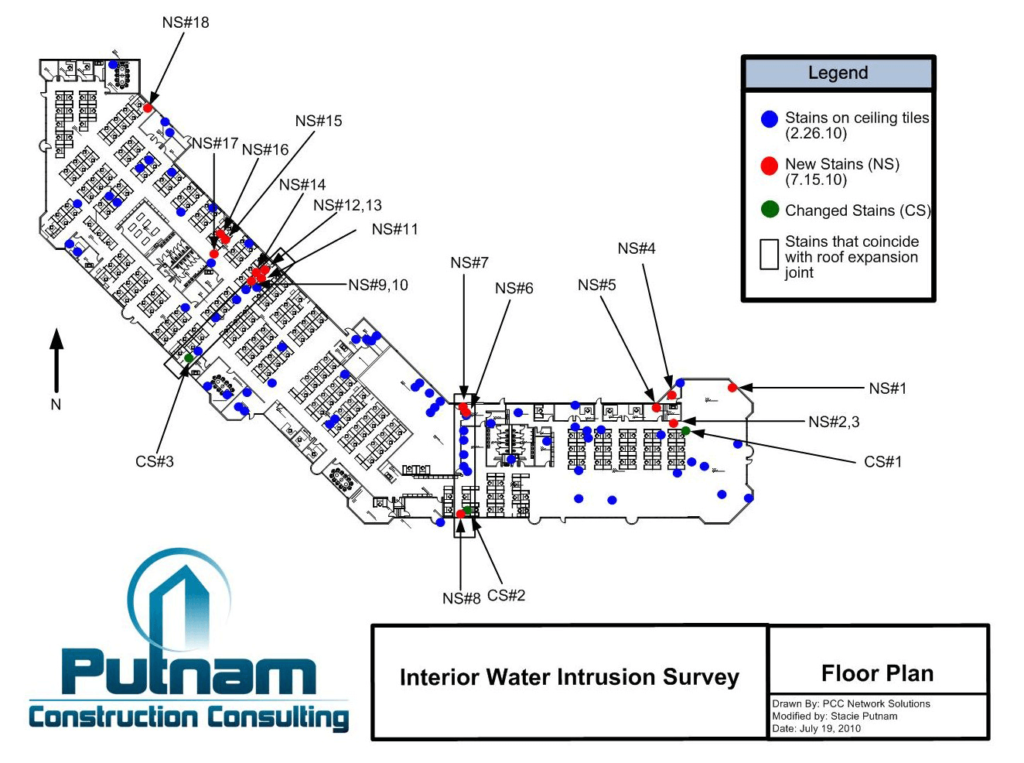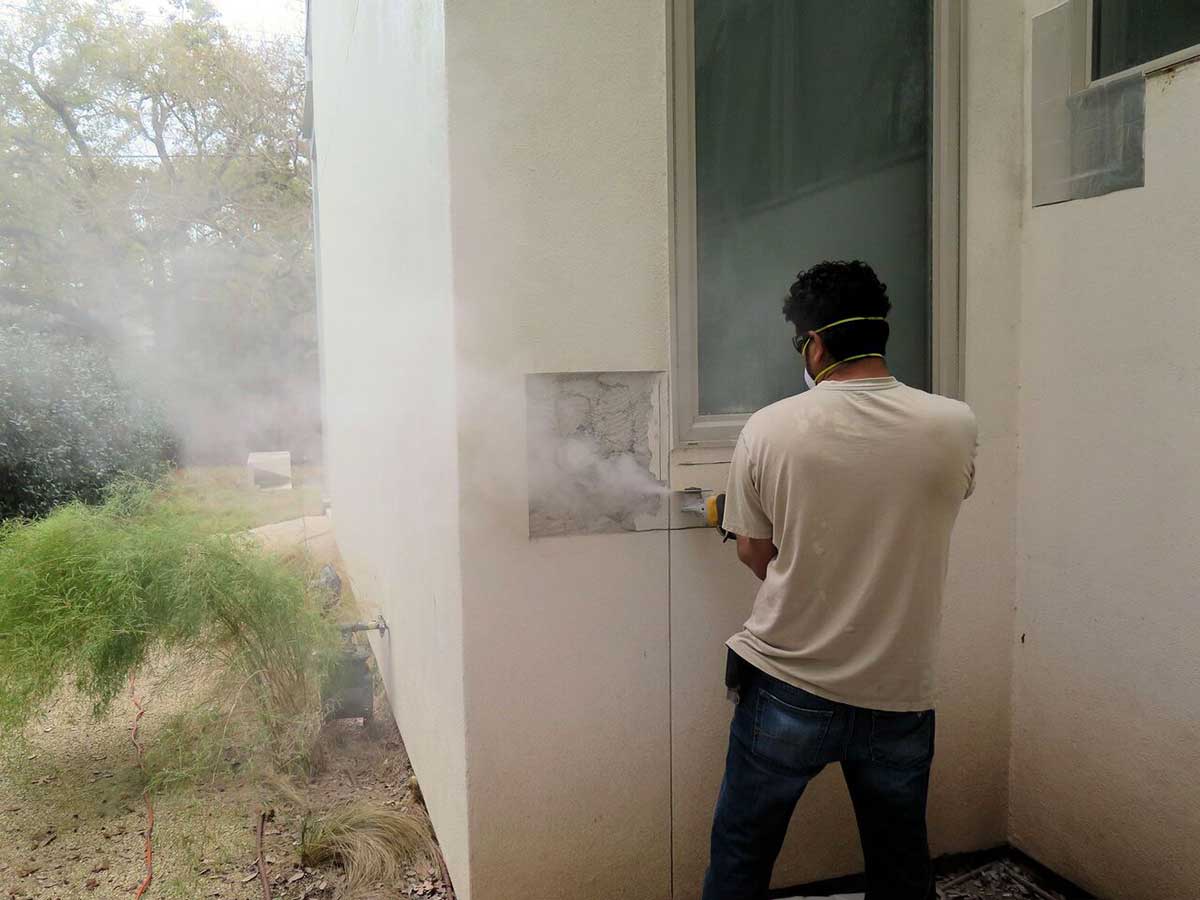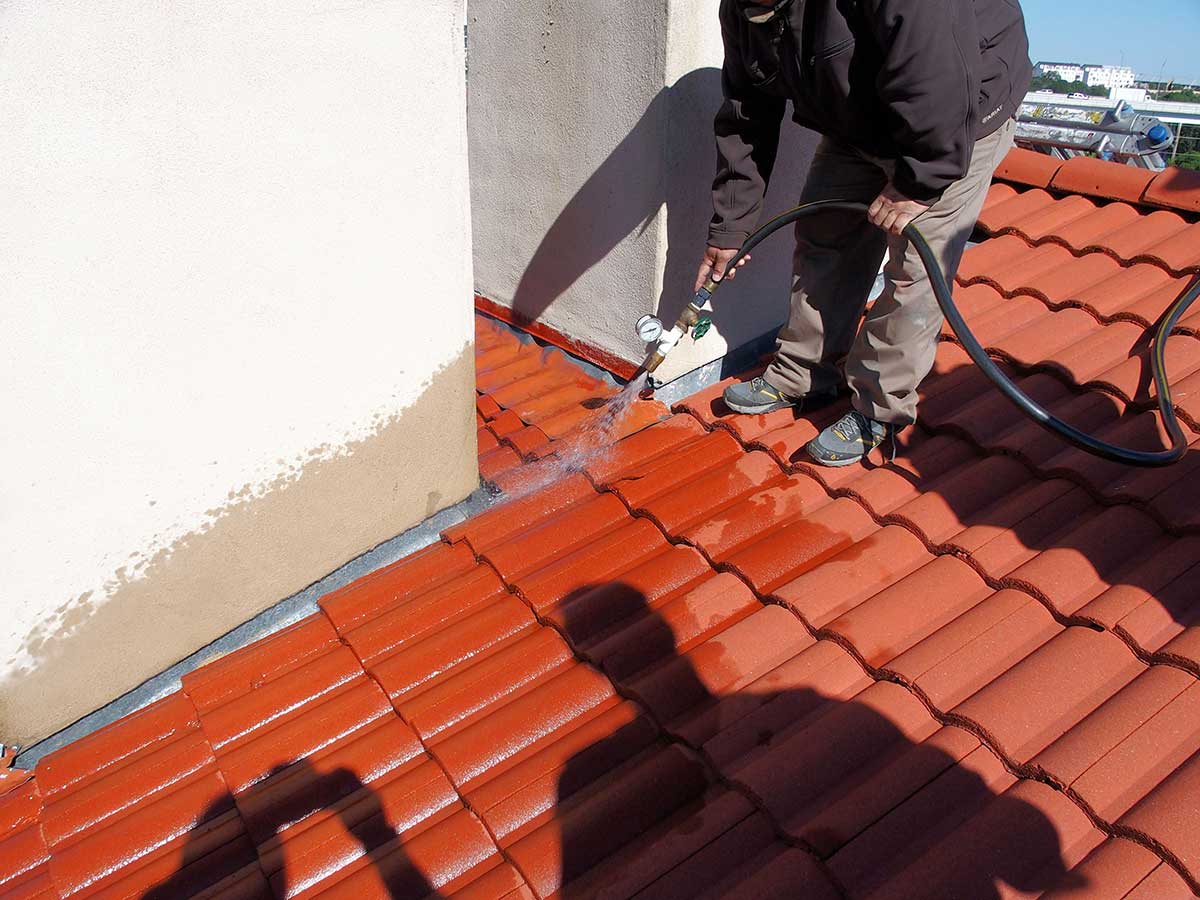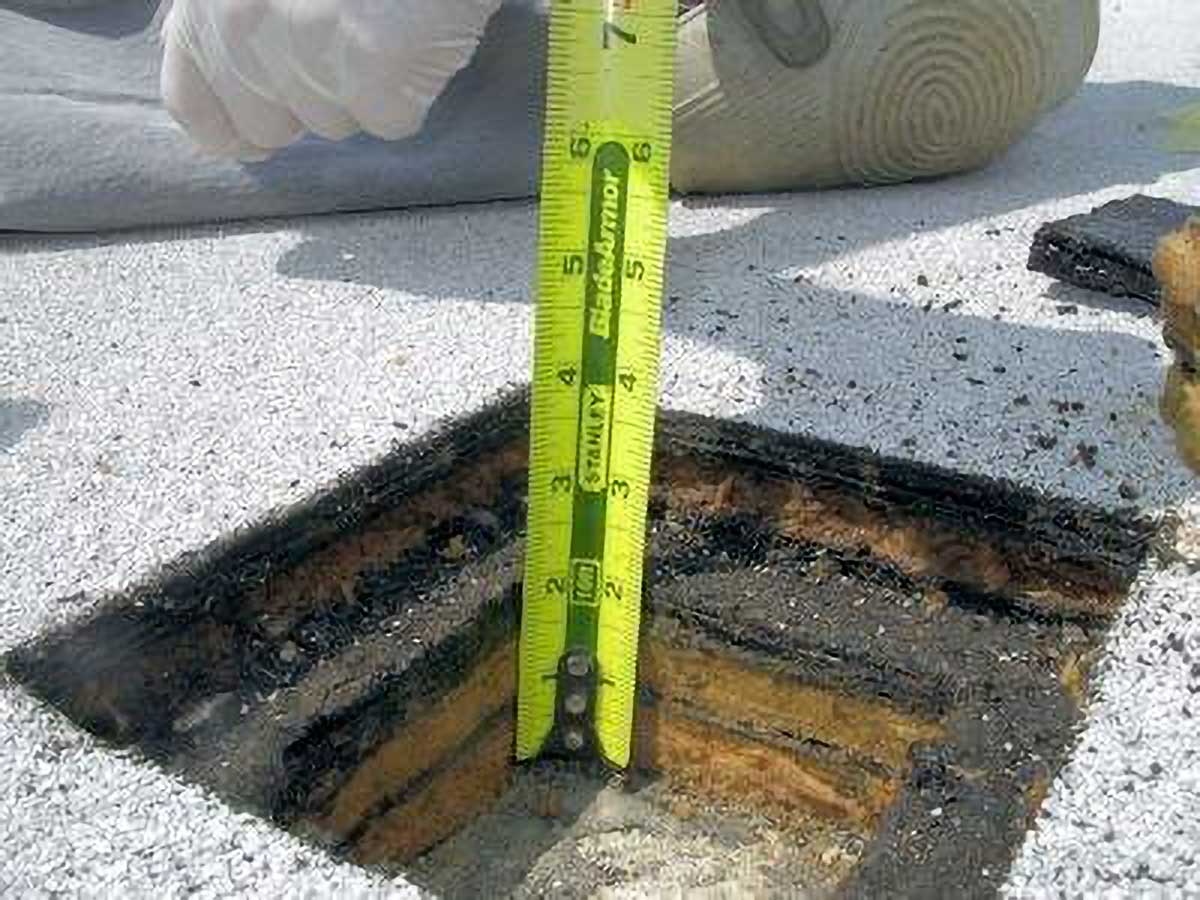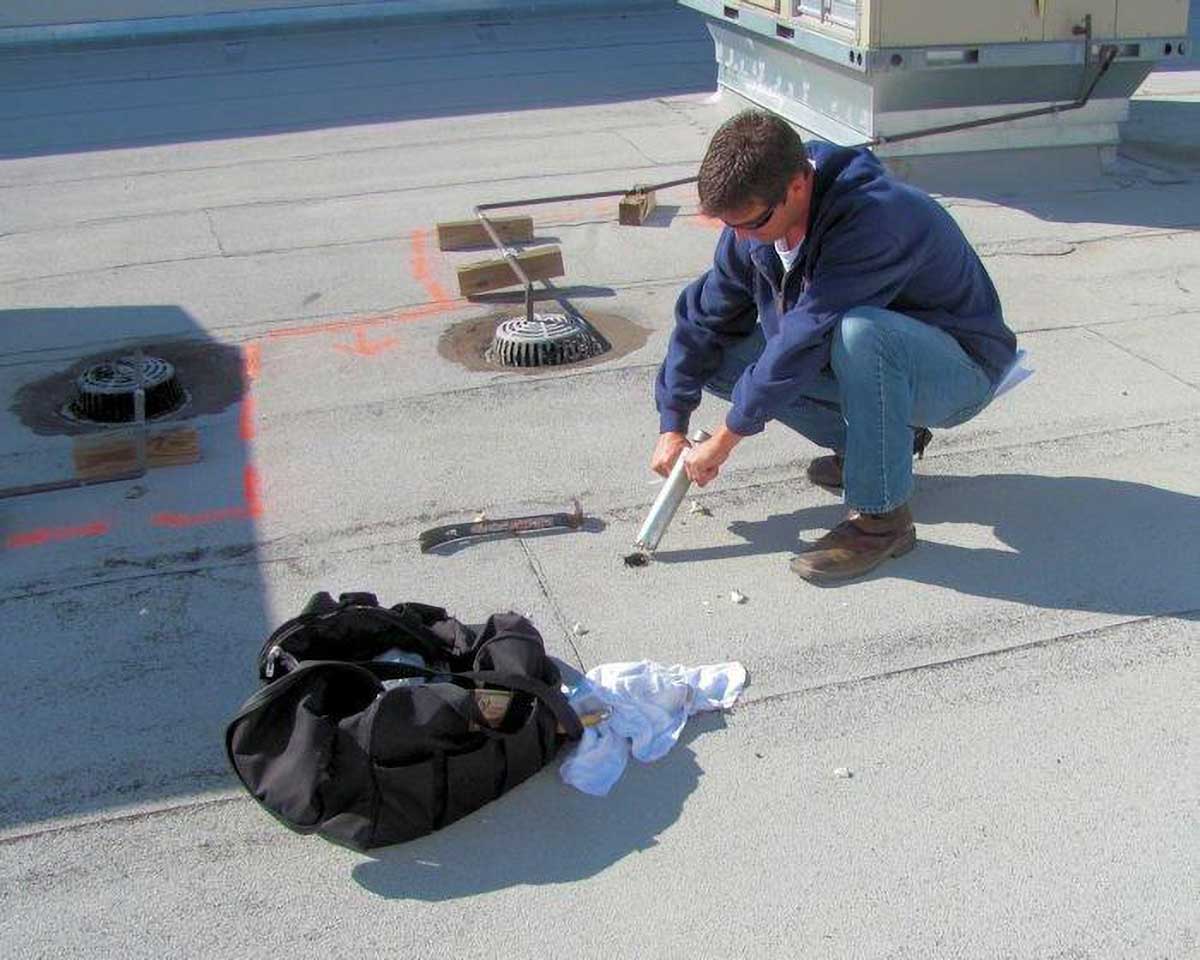Leak Detection
Leak detection and diagnosis can be a difficult task. It calls for an organized and efficient approach. We have been inspecting, diagnosing, and supervising roof repairs and leak-related building repairs for more than 47 years.
We can identify the cause of most roof leaks and other building leaks by simply making a visual inspection. We have seen most of the problem conditions thousands of times (literally), but when the source of the leak is not readily apparent we may employ one or more detection methods as necessary.
Path of Leakage
The path of leakage can usually be traced back to the source by using one or more of the following:
- Visual Inspection
- Hand-held moisture meter
- Tramex Moisture Scanner for large roofs or floor areas
- Borescope for peering into wall cavities
- Infrared Photography
- Selective disassembly of wall or ceiling assemblies
- Diagnostic water testing using controlled hose stream or calibrated spray nozzle
- WallScan®
- StuccoScan®
- FloorScan®
- RoofScan®
- Building Scan®
Our Testing Methods
Water Penetration Testing
When a Detailed Inspection indicates a probability of water penetration or leakage into exterior walls we may recommend water penetration testing to determine precisely where the water is entering the wall and to identify the path of leakage inside the wall. Water Penetration Testing is performed precisely and systematically to allow us to determine the exact cause of leaks. This allows us to form solid expert opinions for matters of litigation or to develop specifications for repairs.
Water Penetration Testing may involve simply applying a low to medium stream of water from a water hose onto various wall and window surfaces, or it may involve the use of hand-held spray nozzles or, in some cases, calibrated spray racks as described in greater detail on our Water Testing page.
Test Cuts
It is sometimes necessary to make test cuts, or to open walls up, either by cutting exploratory openings in the sheetrock at the interior side of the wall or by cutting out sections of stucco on the outside of the wall. Test cuts are sometimes necessary to evaluate how a stucco wall is constructed and almost always necessary when assigning responsibility for construction defects.
You may have seen photos on other websites of large, gaping holes where stucco walls have been torn apart to reveal underlying conditions. That is not what we do. We have refined our techniques over the years to learn what we need to know about the causes of leaks and the existence of construction defects and hidden water damage with a minimum of test cuts. We make test cuts in a very controlled and methodical manner so as to photograph and document precisely how the stucco and underlayment was applied. A completely waterproof covering is then applied to protect the test cut area until the permanent repairs can be made.
When doing water penetration testing at walls or windows we employ our own proprietary inspection and testing protocol, WallScan®. WallScan® allows us to detect changes in the moisture content of the wall assembly without having to cut large openings to observe leakage as it is occurring. WallScan® also allows us to map the boundaries of the high moisture areas and better determine where test cuts should be made – if at all.

